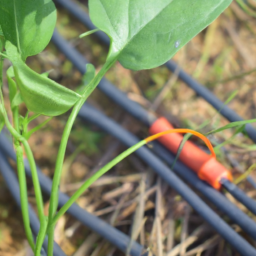Electroculture Gardening How To
Electroculture Gardening How To
Electroculture Gardening: An Expert's Guide to Making the Most Out of This Unique Method
Electroculture gardening is an increasingly popular form of environmental husbandry that utilizes the power of low-voltage electricity to accelerate growth and plant health. Many gardeners have found it to be an effective method to maintaining lush and beautiful plant life. This article will provide an in-depth guide to getting the most out of electroculture gardening, and cover eight points: history, methodologies, risks, best practices, benefits, best plants, politicization, and social media.
History of Electroculture Gardening
Electroculture garden originated in the late 19th century by Nikola Tesla, who was looking for a new way to use electricity to grow plants. He found that occasionally applying a low-voltage current to plant leaves led to accelerated growth, as well as better produce yields. Over time, more and more gardeners experimented with electroculture gardening, and by the mid 2000s, it had become a popular practice among many gardeners.
Methodology of Electroculture Gardening
The basic methodology of electroculture gardening is quite simple. First, the gardener applies a low-voltage current ensuring that the exposed conductors are in contact with the leaves of the plant. This current is usually supplied by a 9-volt battery or a small solar panel. The current stimulates the leaves and root system of the plant, leading to faster growth and better yields.
Risks of Electroculture Gardening
One of the drawbacks to electroculture gardening is that it can be risky. The low voltage current can be dangerous if not properly monitored or applied. Additionally, some plants are not suited to the electroculture method and can actually be damaged by the current. It is important for the gardener to do research and use caution when attempting this method.
Best Practices for Electroculture Gardening
When beginning electroculture gardening, it's important to know the best practices for doing so. First, decide which plants are best suited for this method and buy the necessary supplies. Next, choose an area of the garden that can be easily reached and that will allow for the cracking current to be applied in a safe manner. Lastly, be sure to monitor the current and use a timer if necessary. This will help ensure that the plants are never harmed by an extended application of current.
Benefits of Electroculture Gardening
The primary benefit of electroculture gardening is that it accelerates the growth of plants. This can lead to bigger harvests and better yields. Additionally, it can help reduce the amount of manual work required for gardening and can help reduce the strain on the environment.
Best Plants for Electroculture Gardening
Different plants respond differently to electroculture gardening. Some of the best plants to grow using this method include tomatoes, peppers, spinach, lettuce, and strawberries. Additionally, some herbs like basil, rosemary, and mint can be also grown using this method.
Politicization of Electroculture Gardening
Recently, electroculture gardening has become a topic of heated political debate. The environmental movement has embraced it as an eco-friendly way of growing food, while others have argued that it is dangerous and should be discouraged. This has sparked a lively and ongoing debate over the future of this practice.
Social Media and Electroculture Gardening
The rise of social media has lead to a surge in interest in electroculture gardening. Many gardeners have taken to sites like Instagram, YouTube, and Facebook to share their experiences and advice on this unique form of environmental husbandry. This has helped to spread awareness about electroculture gardening and has encouraged more people to get involved in some form of gardening.
Insights
Electroculture gardening has been a popular practice for over a century, and is becoming increasingly important as more gardeners look for eco-friendly ways to grow food. This article has outlined the history, methodologies, risks, best practices, benefits, best plants, politicization and social media surrounding electroculture gardening, to help ensure that readers can get the most out of this unique form of gardening.

Previous Page
Next Page
